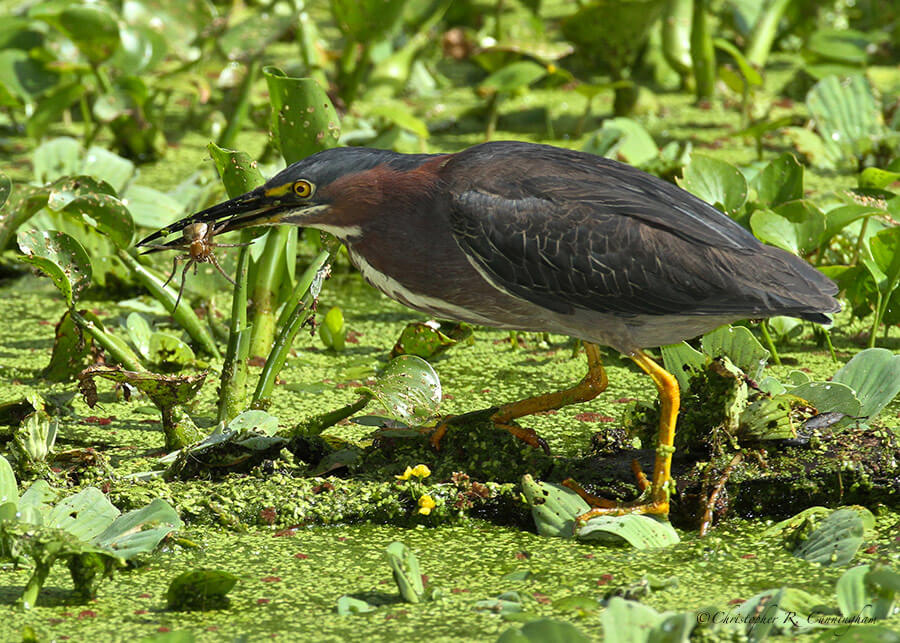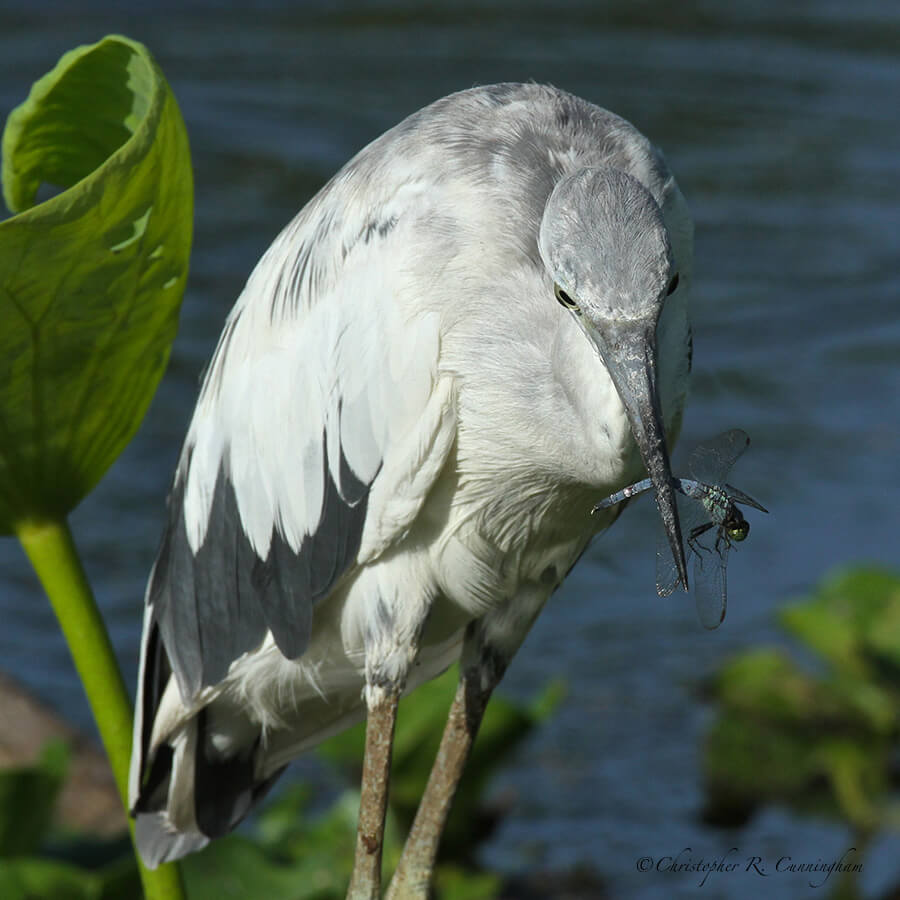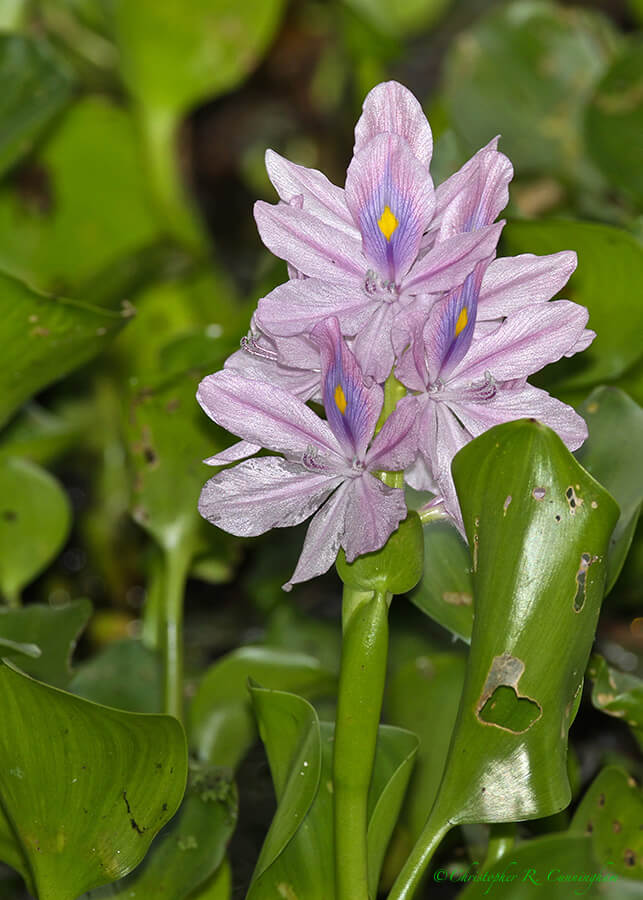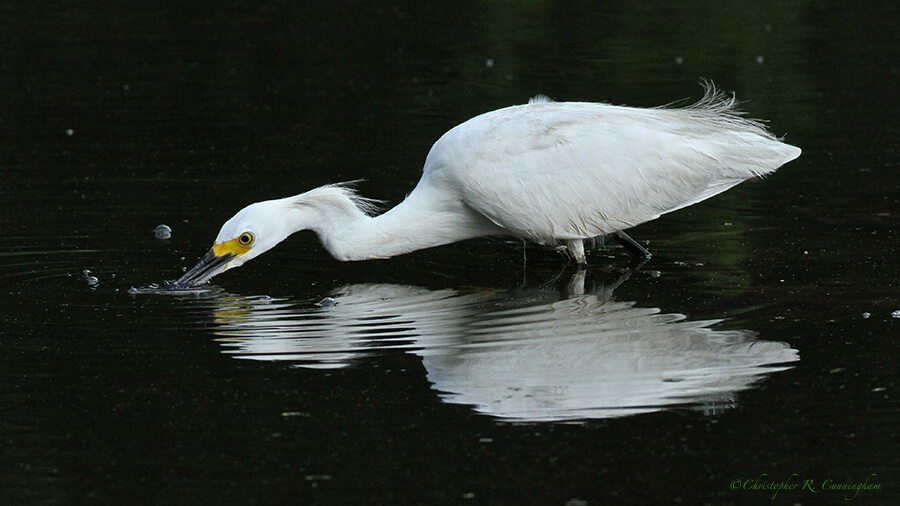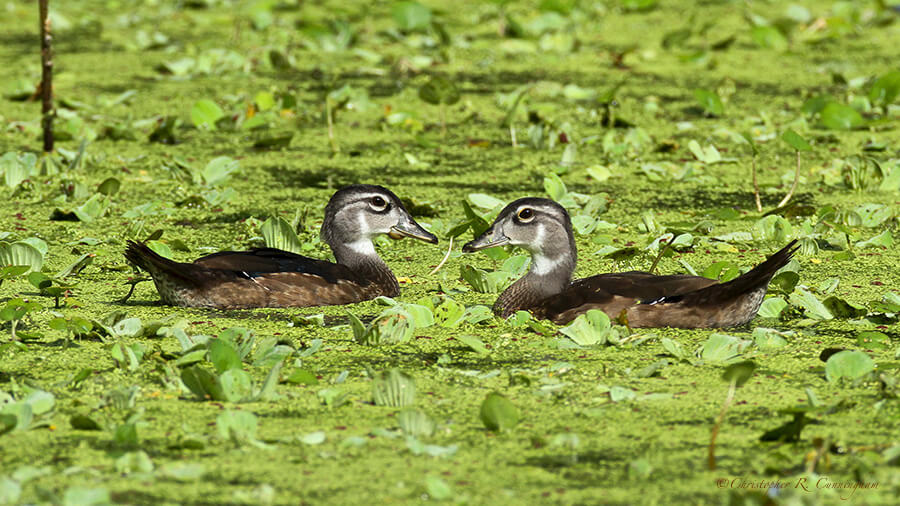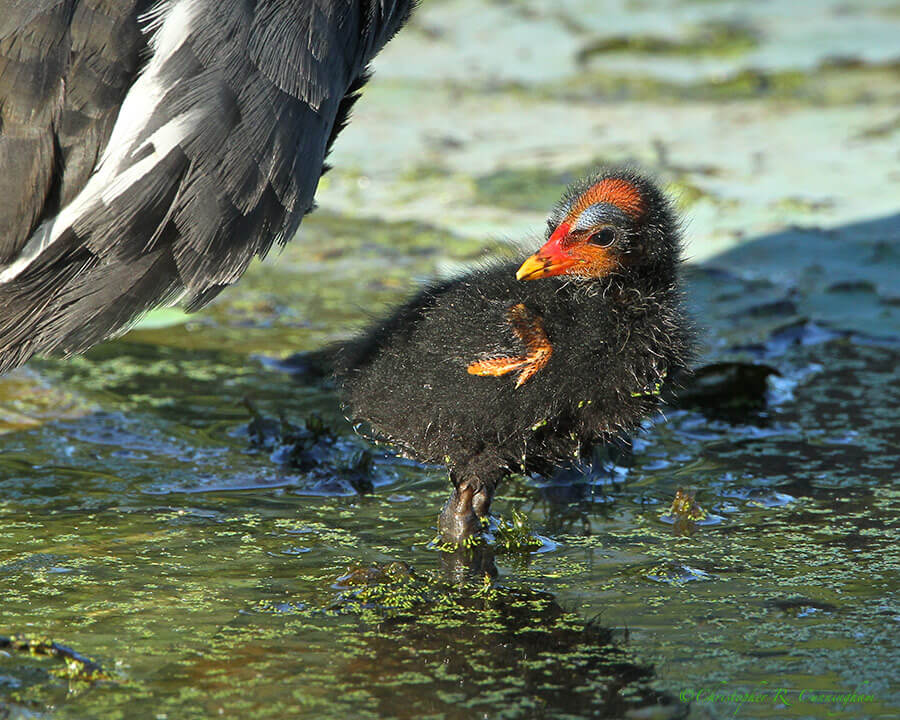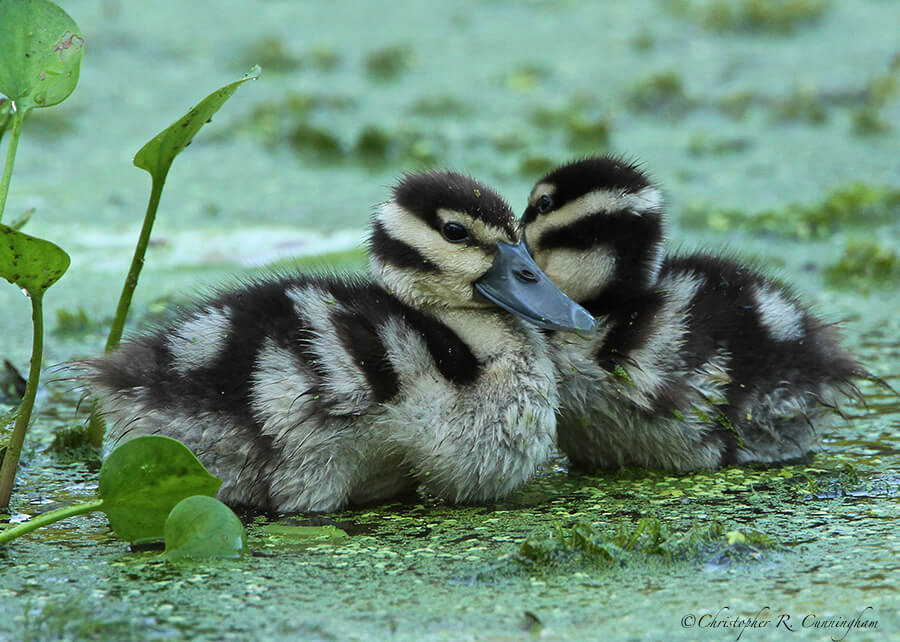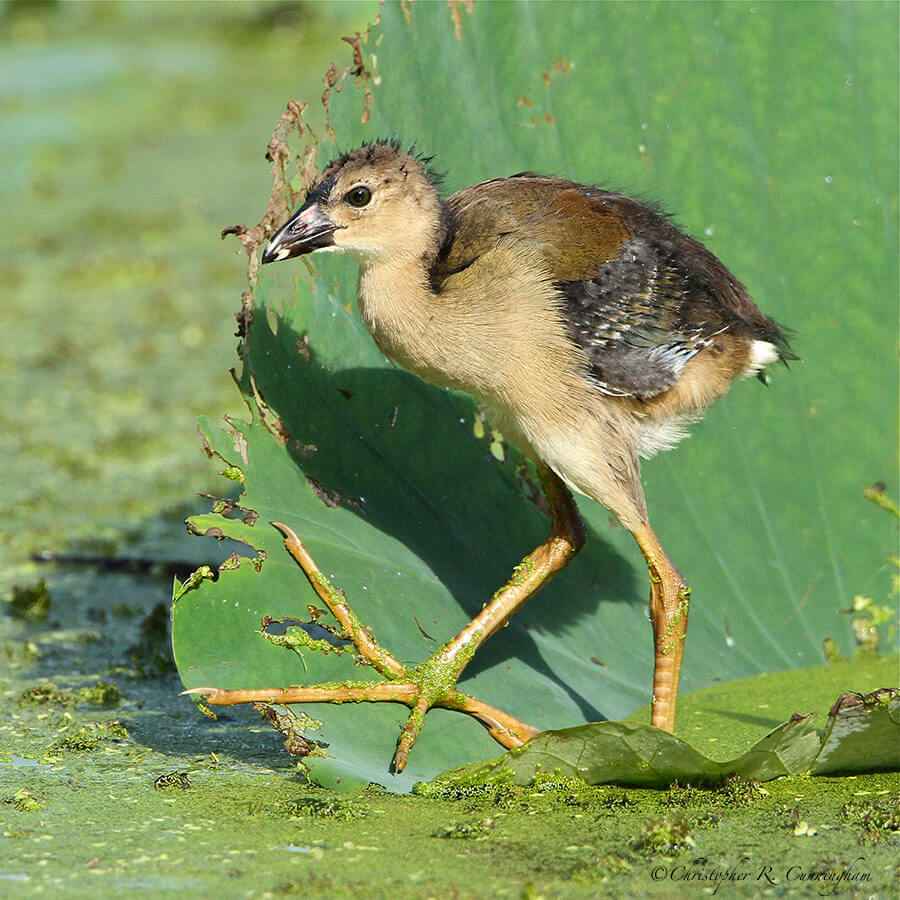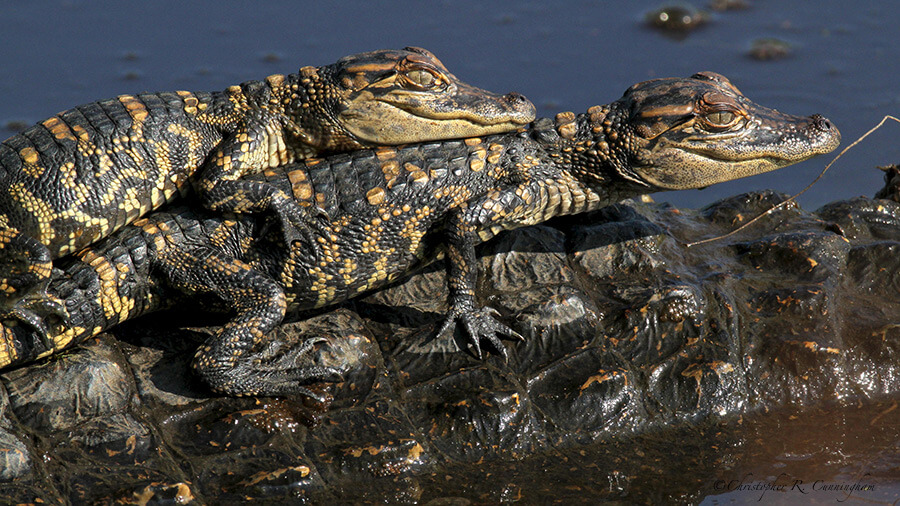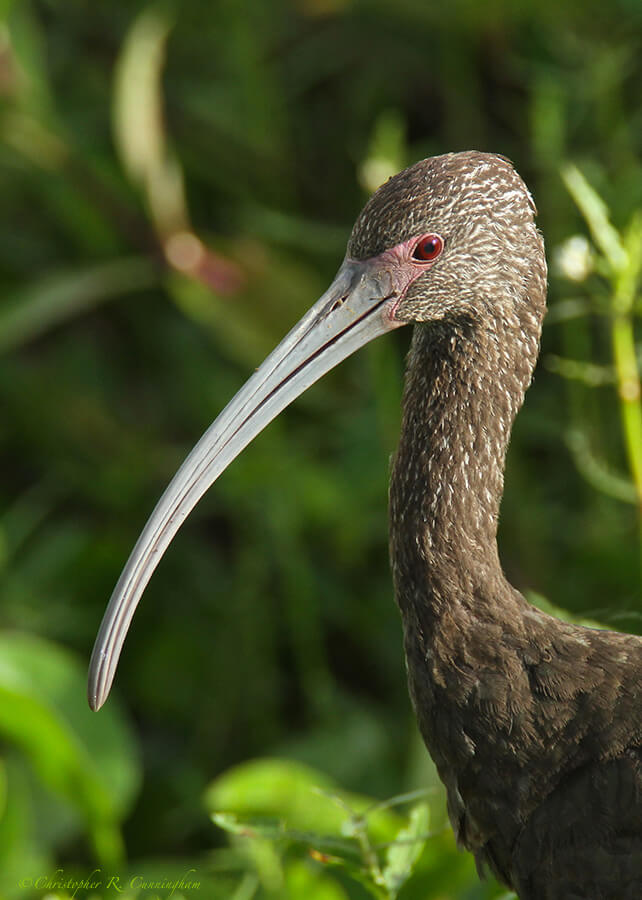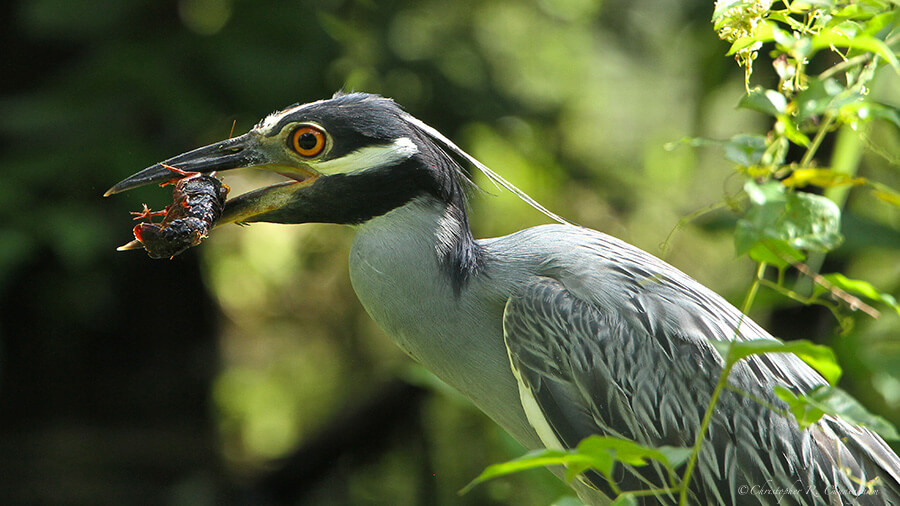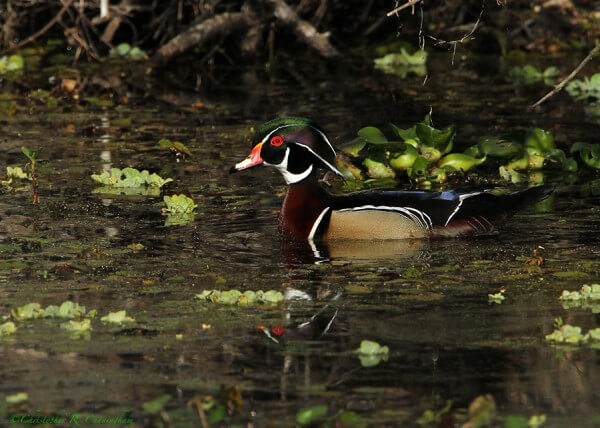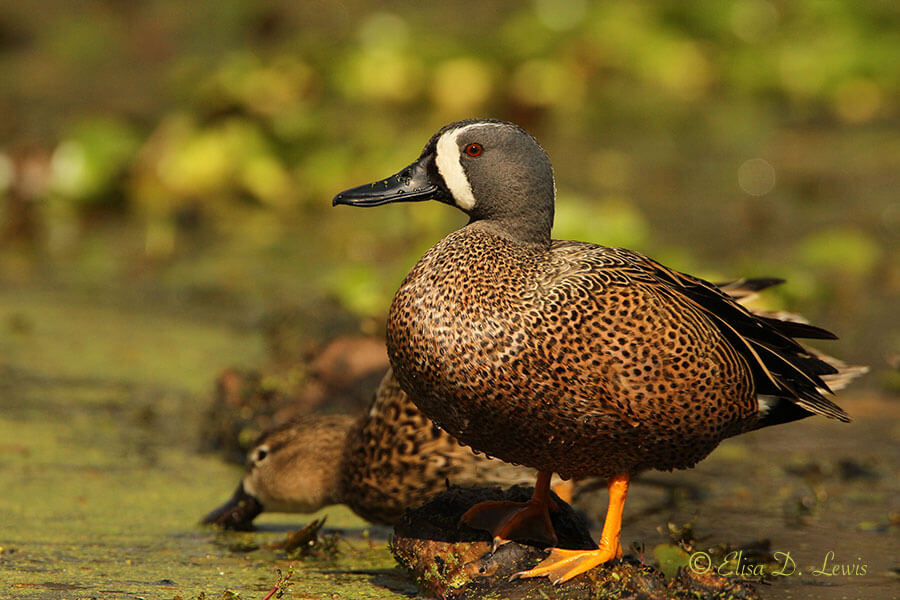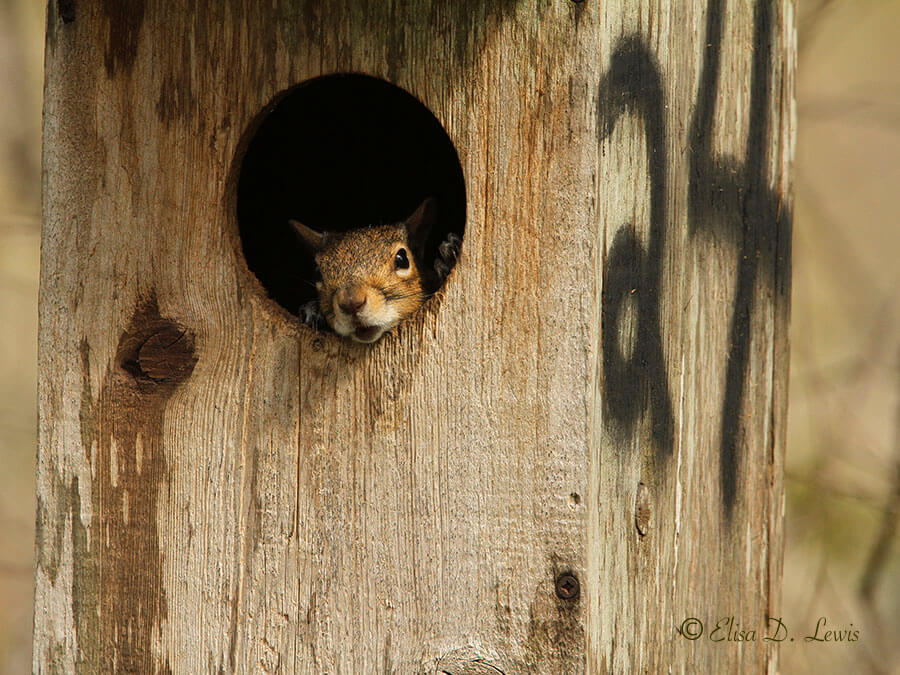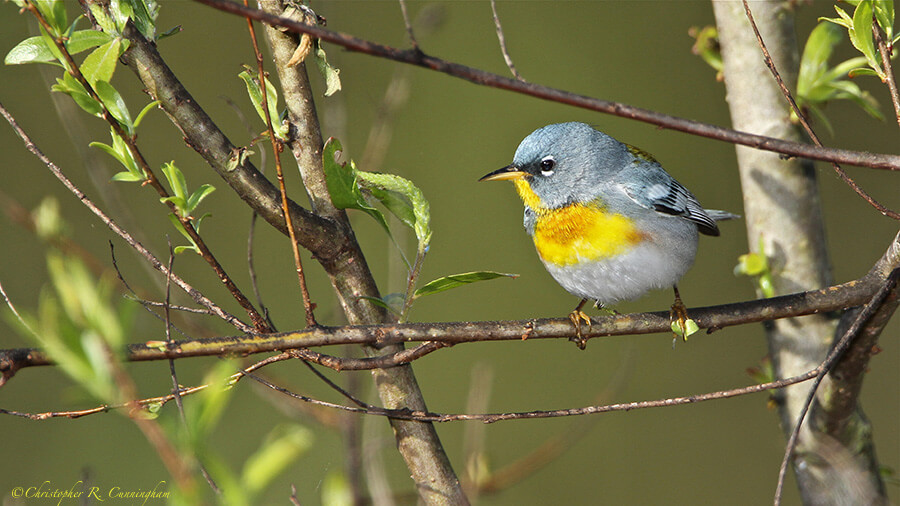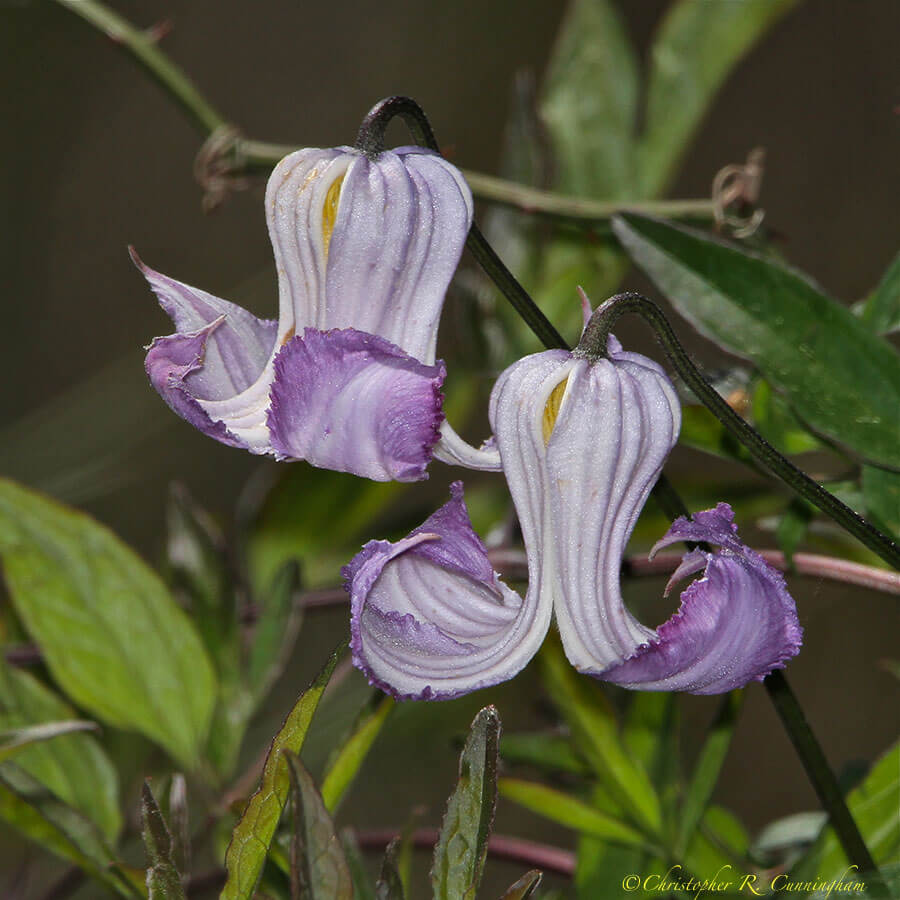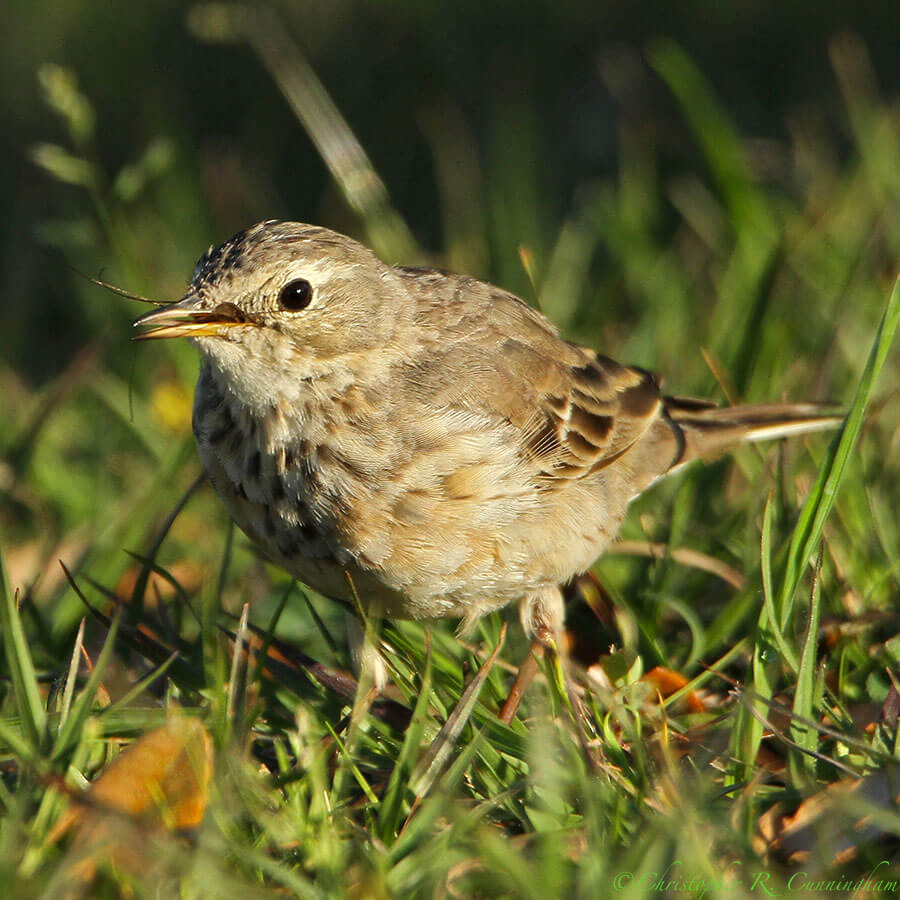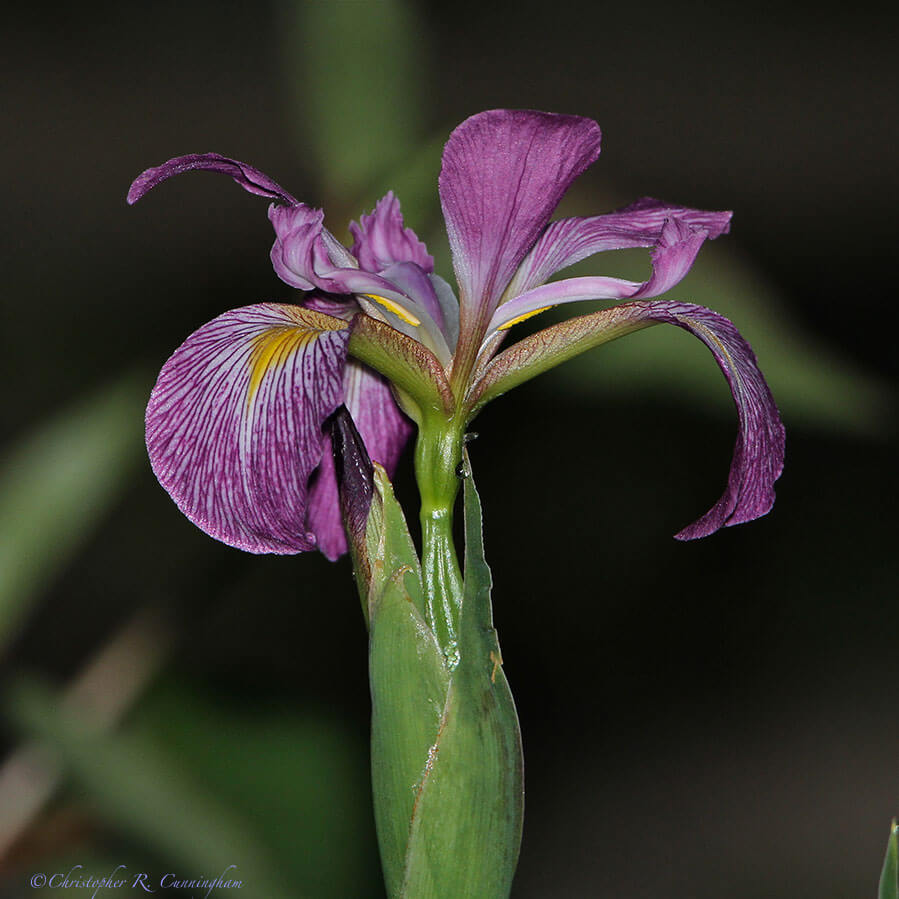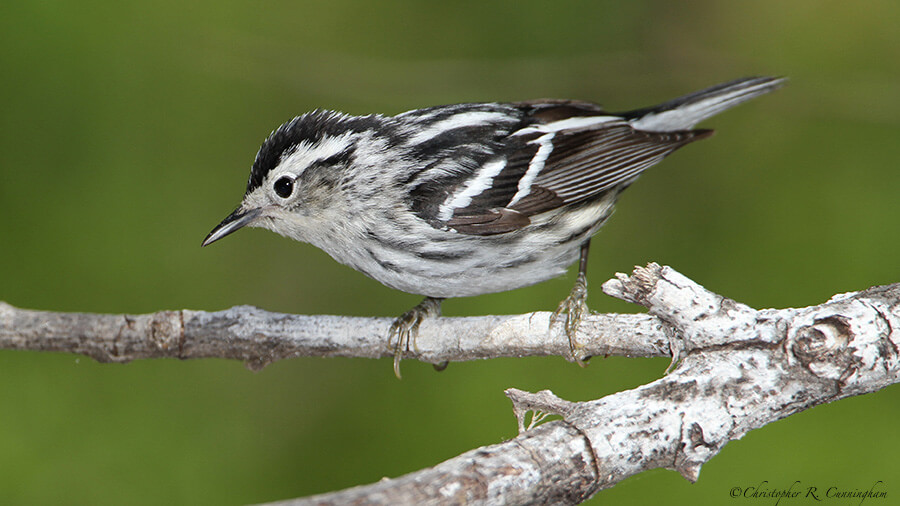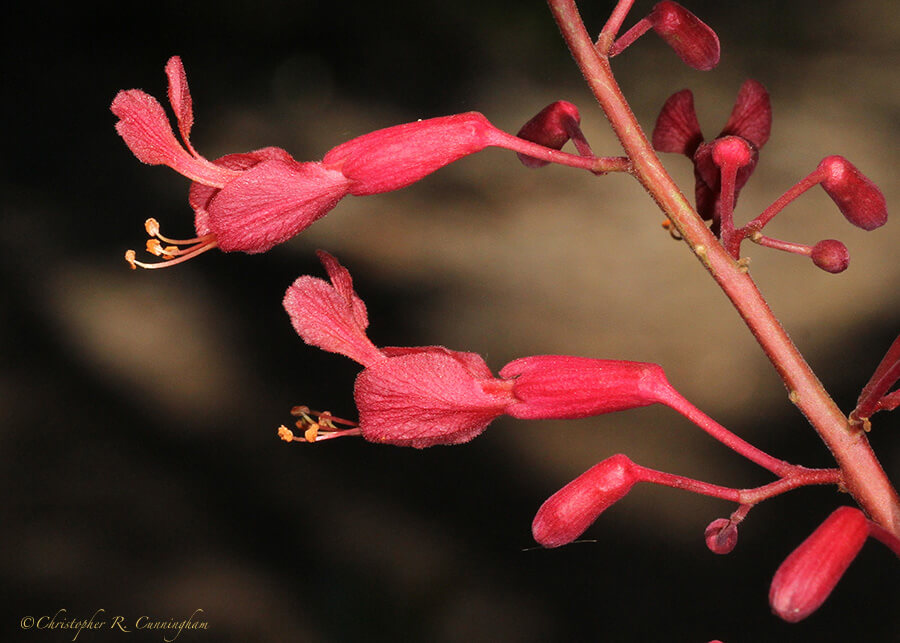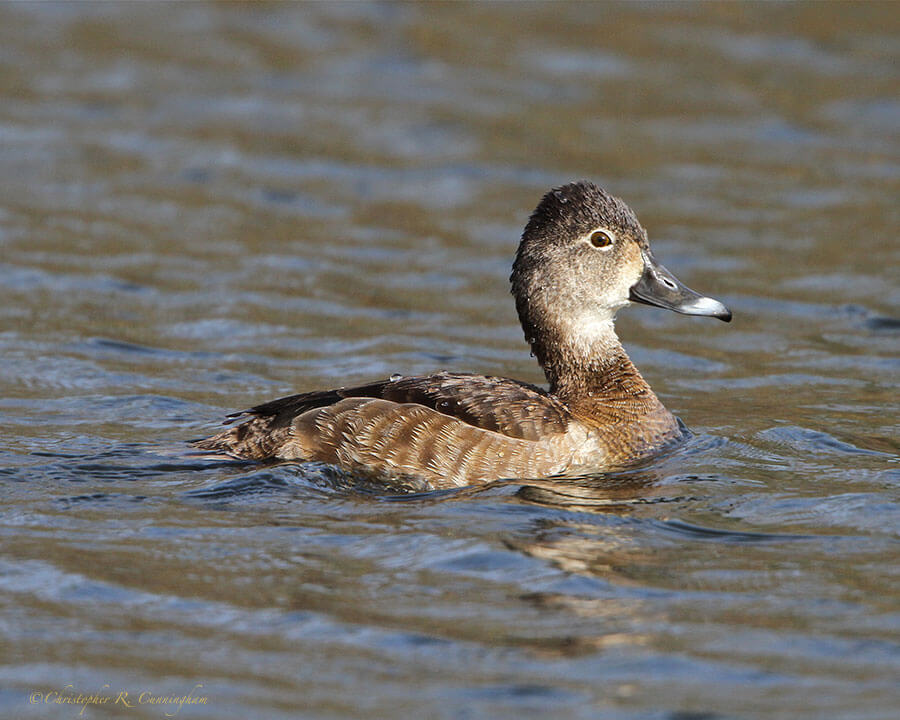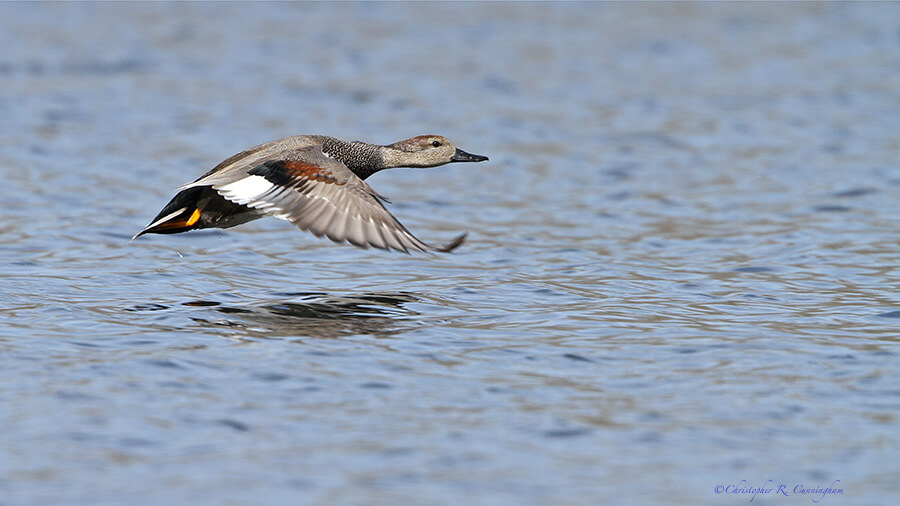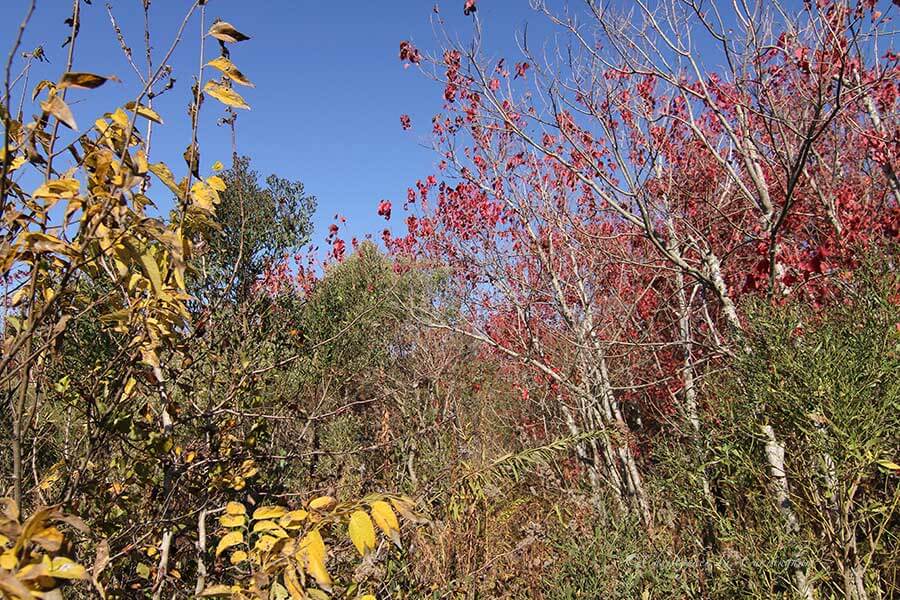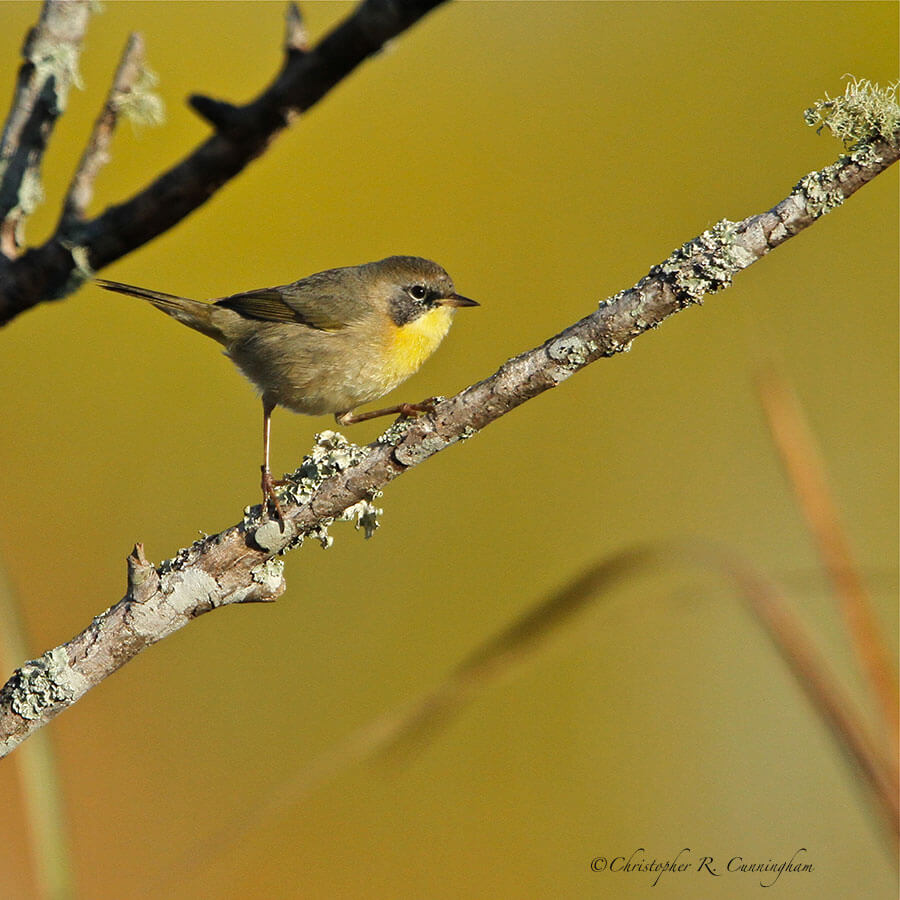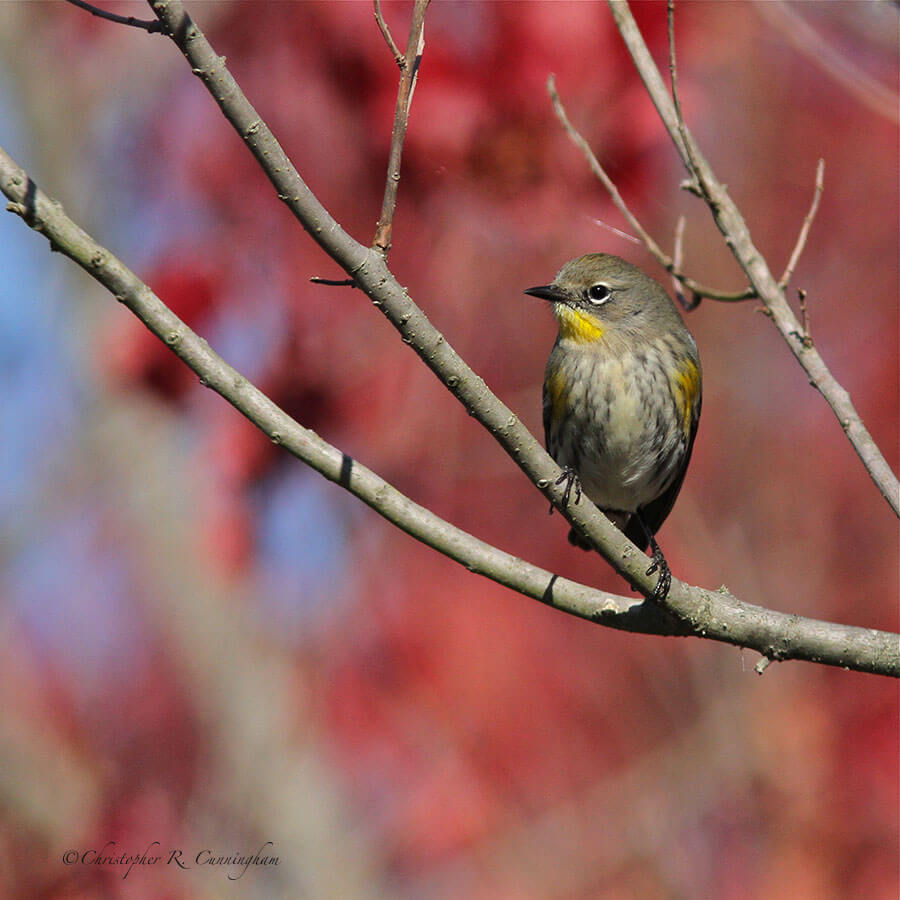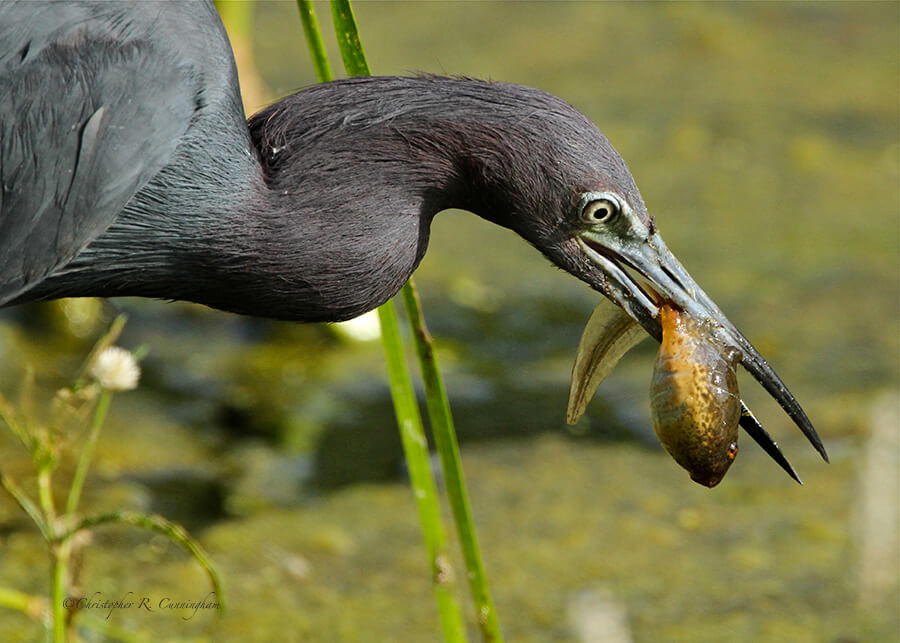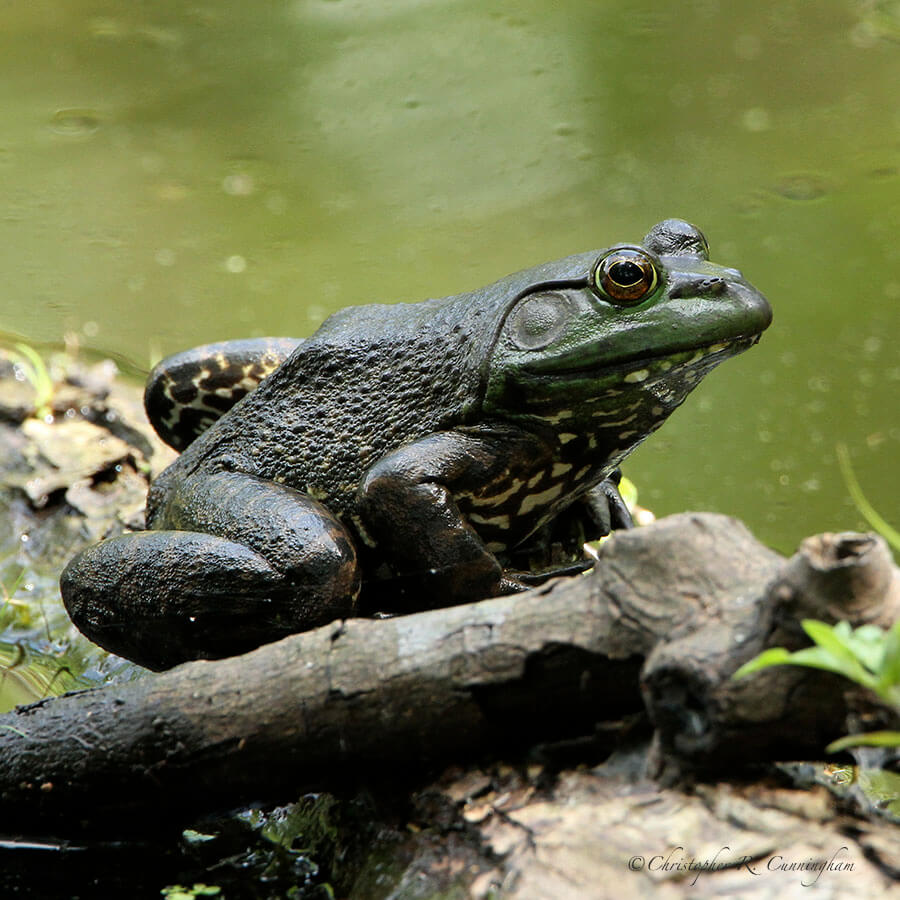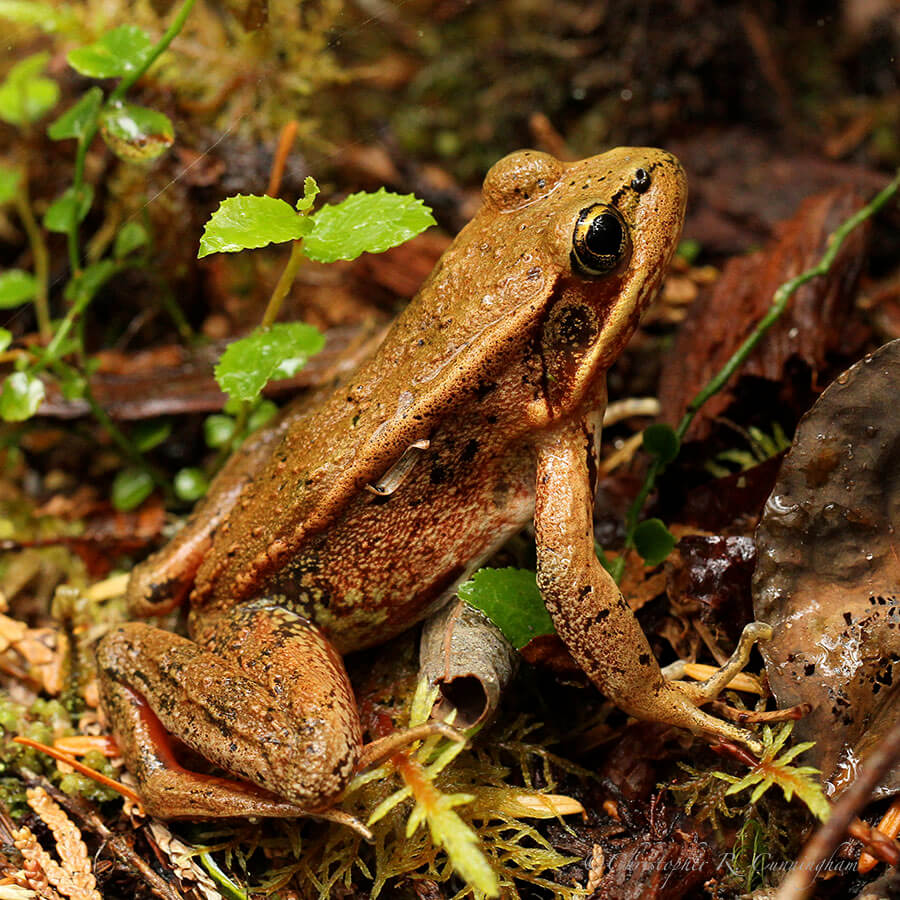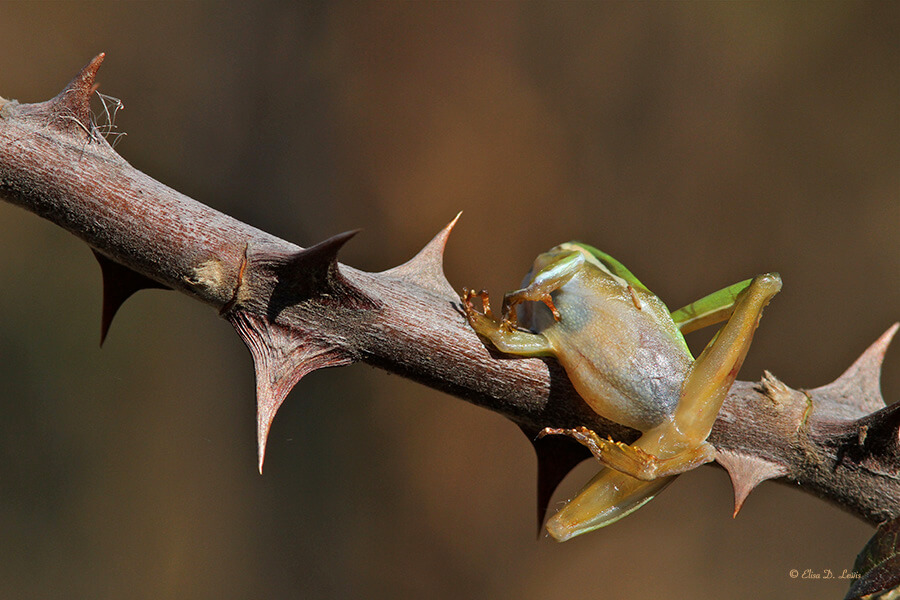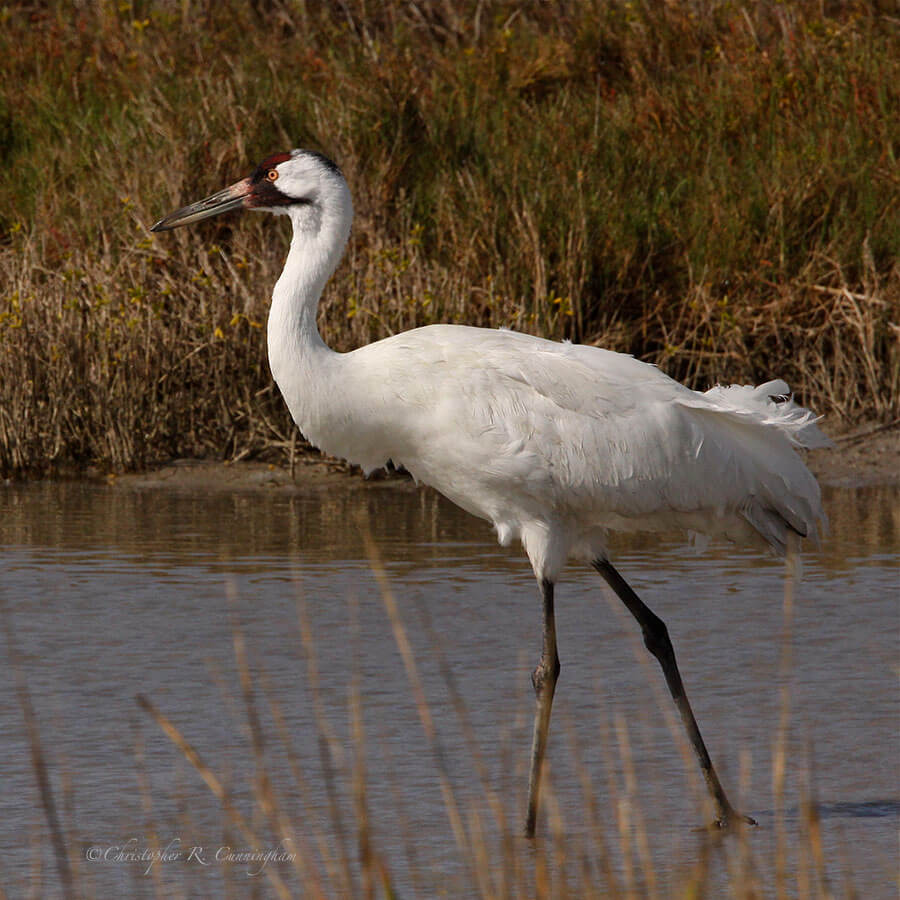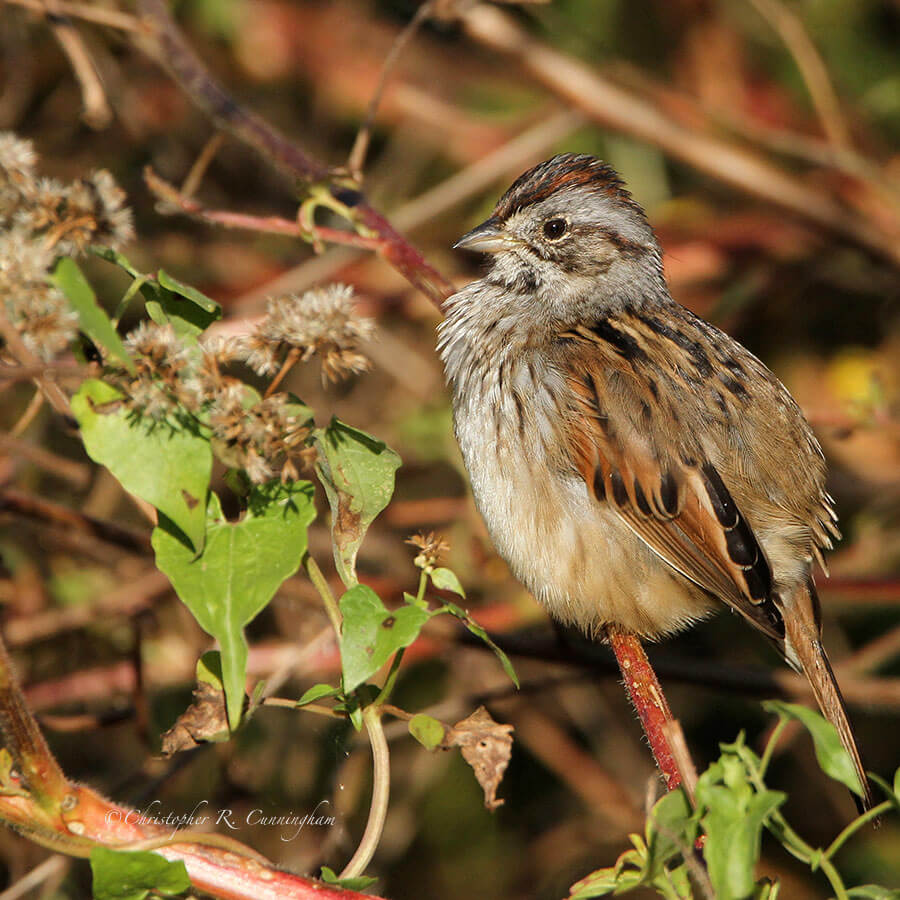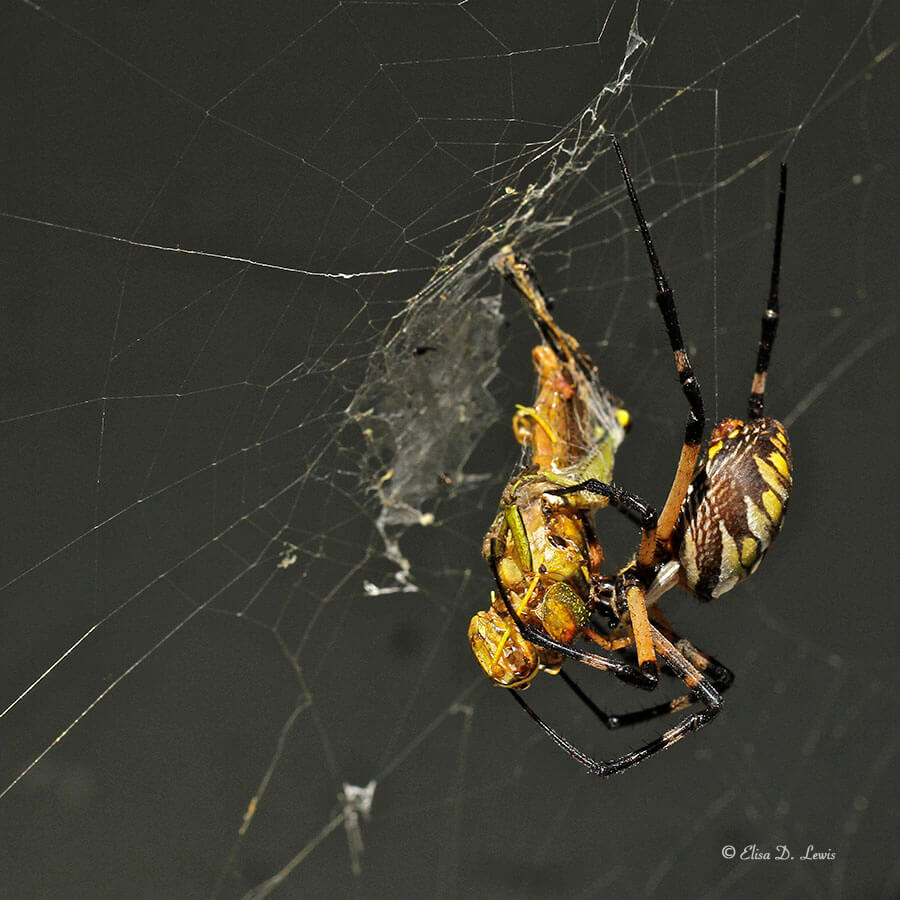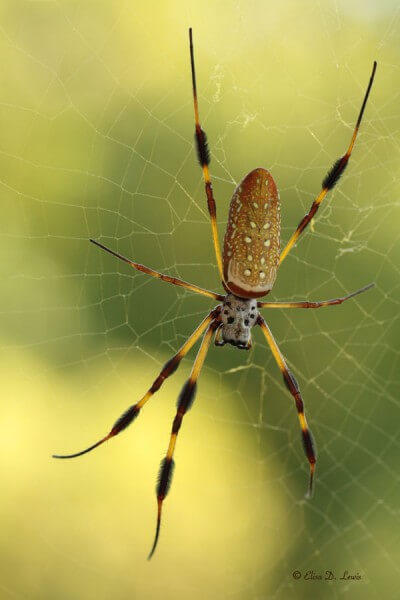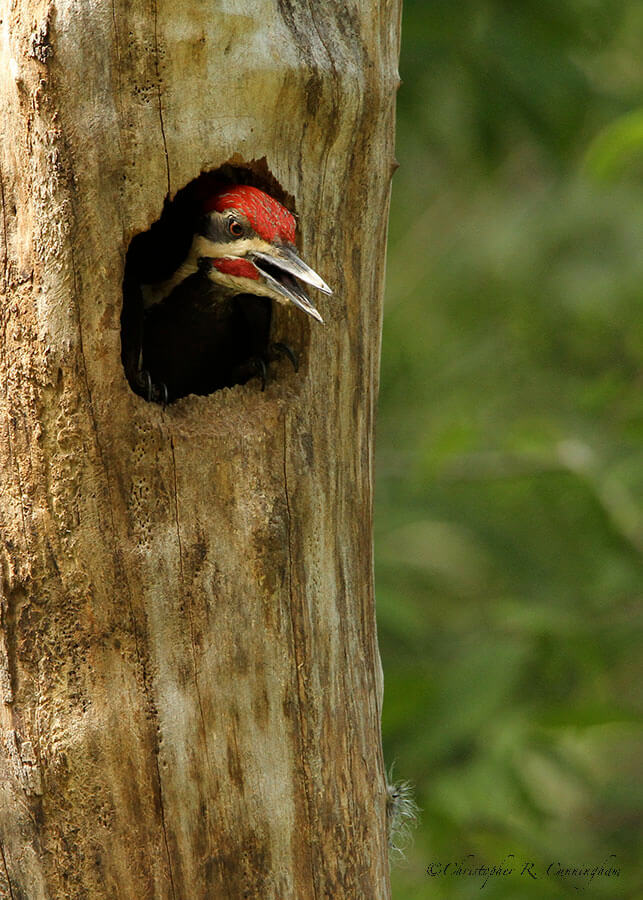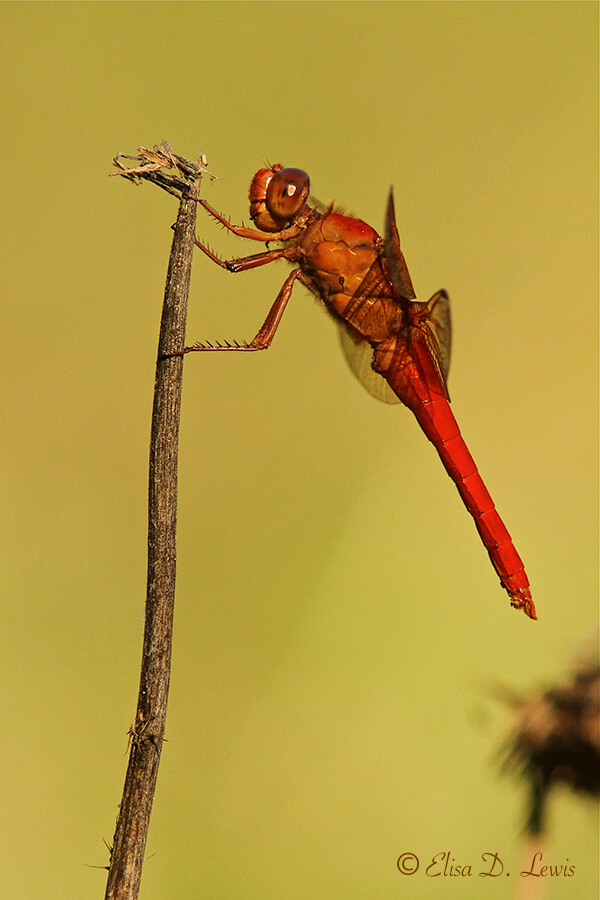
During the summer in Gulf Coast Texas, when bird diversity is relatively low, there are generally lots of insects–especially dragonflies–to draw the photographer’s attention. Clearly dragonflies, although small, cannot be treated like typical macro subjects, at least most of the time. First of all, they are highly aware of their surroundings and sometimes won’t let you get close to them. Second, along the Gulf Coast they are often perched on emergent vegetation in alligator- and water moccasin-infested water, or chigger-infested grass.
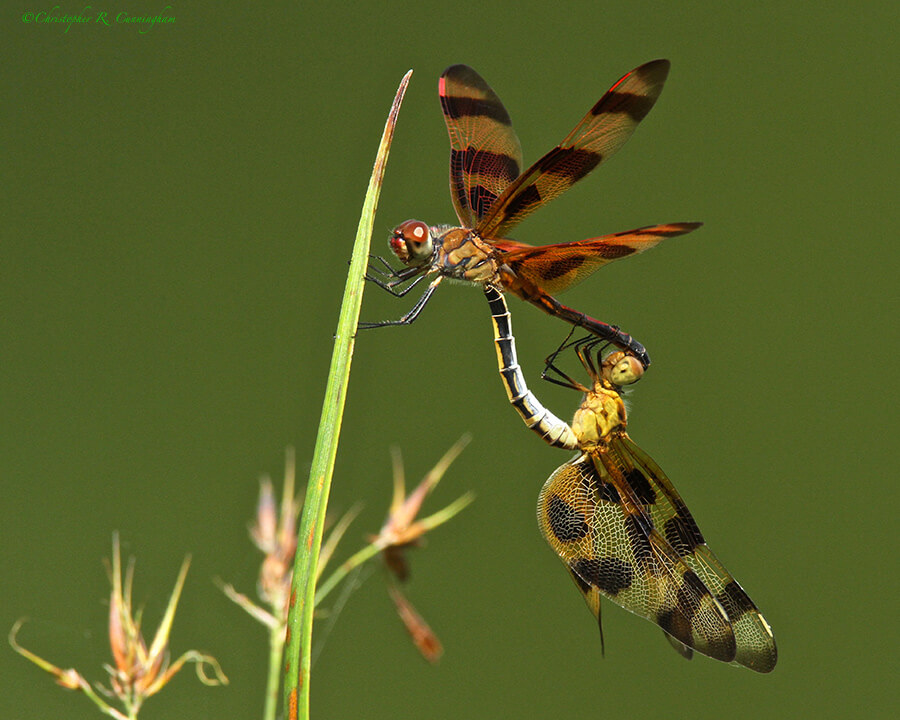
So rather than use a lens requiring a close approach (the super sharp 100mm f/2.8L IS macro, for example), the question becomes which super telephoto is the best dragonfly lens? Further, is flash necessary or even best? Should the 1.4x teleconverter be used? What about extension tubes? With this many questions and permutations of possible combinations of equipment (plus field considerations), I’ve come nowhere near a definite conclusion, but at least I have identified some issues–and I’m excited about further experimentation!
Although I know that some photographers use extension tubes in this application, for the moment I’m taking them off the table primarily because these devices (hollow tubes inserted between the camera and lens that decrease the minimum focus distance while retaining most camera functions) significantly decrease the flexibility of the set-up. Extension tubes cost image brightness, slow autofocus (if they allow it to function at all), slightly shift the focal point of the lens, and degrade the ability to focus at a distance. I’m looking for a rig that will allow excellent captures of dragonflies while preserving my options should a bird or other animal suddenly appear at a larger distance.
That said, the different super telephotos I have access to (100-400mm, 300mm, 500mm; 600mm) have different minimum focus distances (MFD) and magnifications. Of these, the 100-400mm is definitely out: It is a versatile lens, but it just isn’t as sharp as the primes (fixed focal length lenses). The 300mm has the closest MFD (4.93 ft), but in my experience that is often irrelevant because the bug won’t let you get anywhere near that close.
On the other end of the scale, dragonflies will almost always let you get to the MFD for the 600mm (18.04 ft), but that’s pretty far away for such a small animal. Teleconverters do not affect MFD, but they soak up a little light and degrade sharpness (only slightly for 1.4x on a prime). So far, I have liked some shots taken with the 600mm (+1.4x TC). This is probably because of the number of opportunities I’ve been able to take with such a large MFD–I don’t risk trying to get too close and chase the subject away.
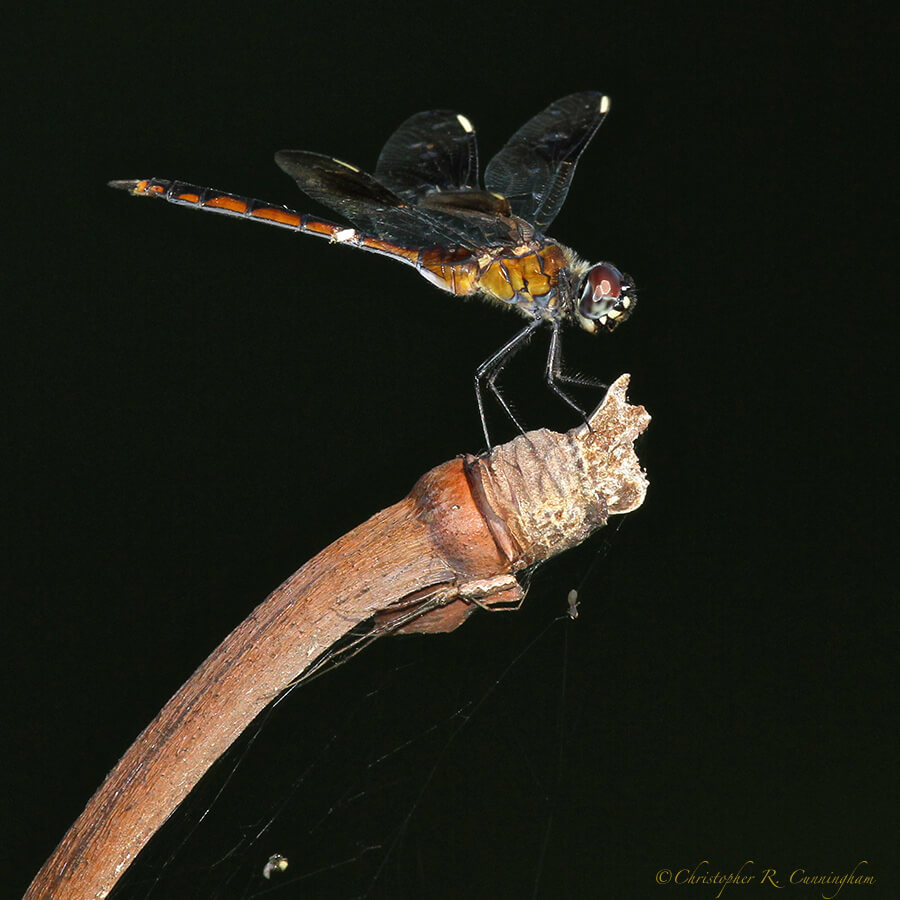
Of the three primes (with teleconverters attached) being discussed here, the 600mm should give the worst results on theoretical grounds. The ratio of focal length (the longer, the better) to MFD (the smaller, the better), is a way to think about this issue. The larger this ratio, the better because it expresses how much focal length “firepower” you have per separation distance. For the 300mm (+1.4x TC), the focal length/MFD ratio = 85 mm/ft. For the 600mm (+1.4x TC), focal length/MFD ratio = 47 mm/ft. The ratio for the 500mm has a value of 48 mm/ft, nearly the same as the 600mm. So if you could get close, the 300mm should be best–but often you can’t get that close. Compromise strikes again!
As far as flash is concerned, it seems to be primarily a matter of taste. Natural light, of course, looks more natural. The flash reveals fine details, especially in the shadows, sometimes not visible in natural light. Flash can sometimes create a magical, almost surreal effect as in the case of the Halloween Pennants above. One clear problem with the flash is the same as in the case of birds: the flash adds an extra catchlight in the eyes. Because dragonflies have large compound eyes, the effect can be pronounced.
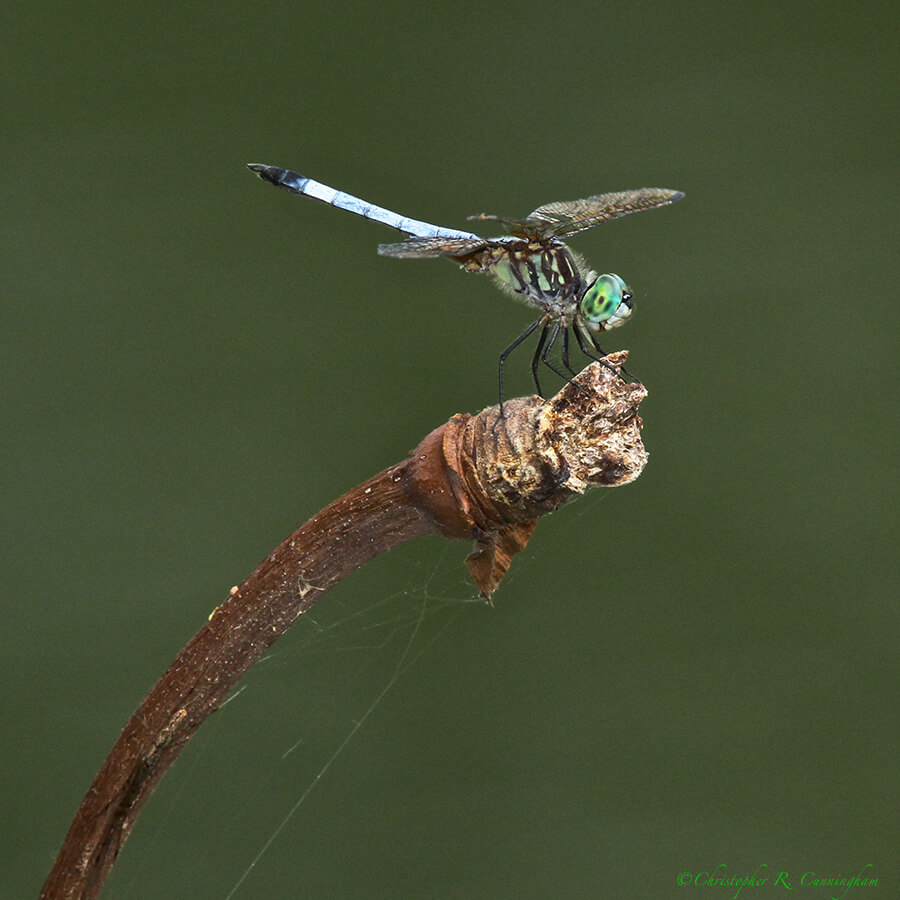
Canon EOS 7D/600mm f/4L IS/tripod. Natural light.
So . . . what to do? For now, keep working, trying new combinations, and see if a clear choice emerges that preserves options and image quality. Finally, all this thought about dragonflies has clearly benefitted my bird photography in one way. I can now easily recognize all the common dragonflies around the places I normally shoot, and thus can put a technical name on some of the meals my beloved waders are enjoying!
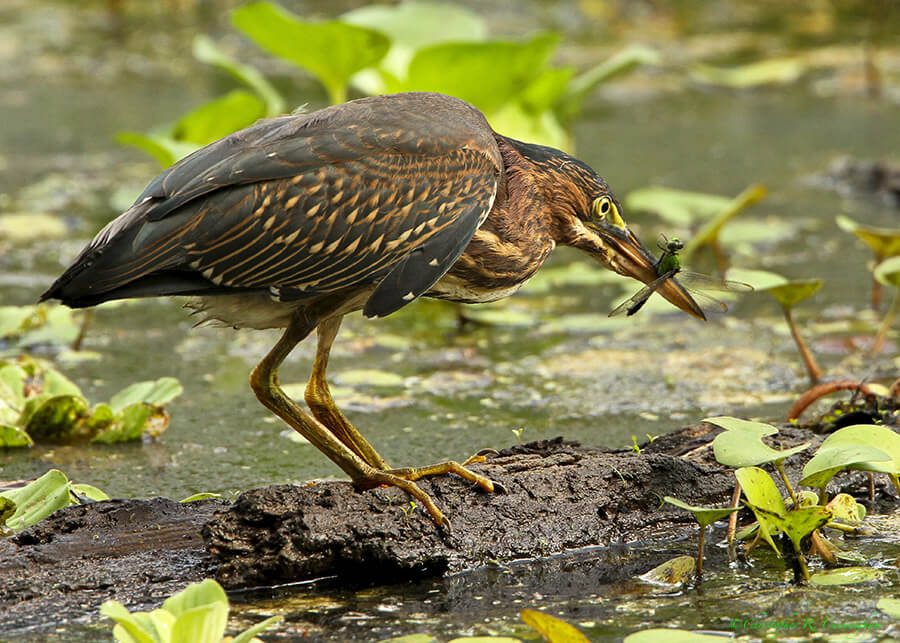
“Your first 10,000 photographs are your worst.” ― Henri Cartier-Bresson
